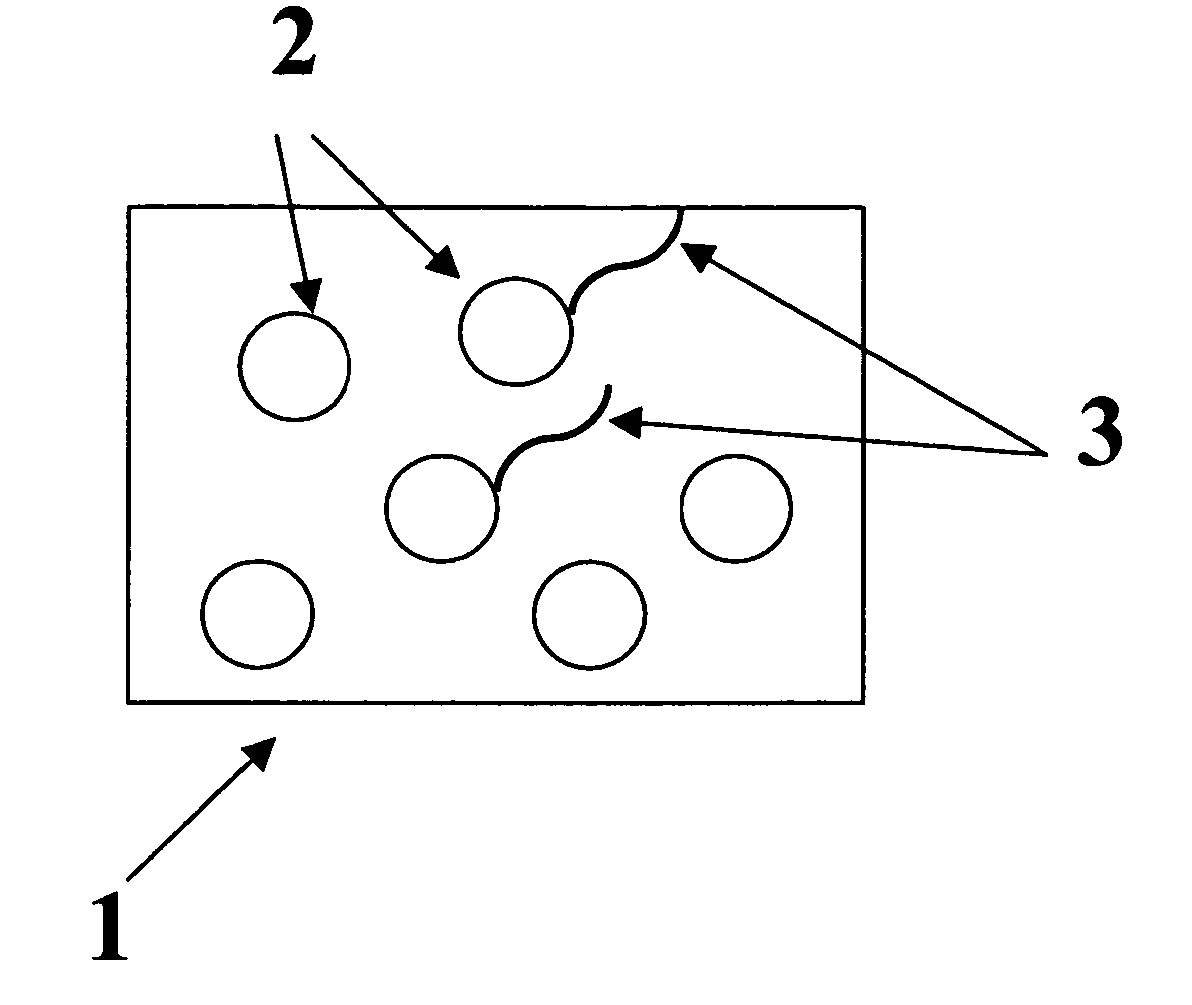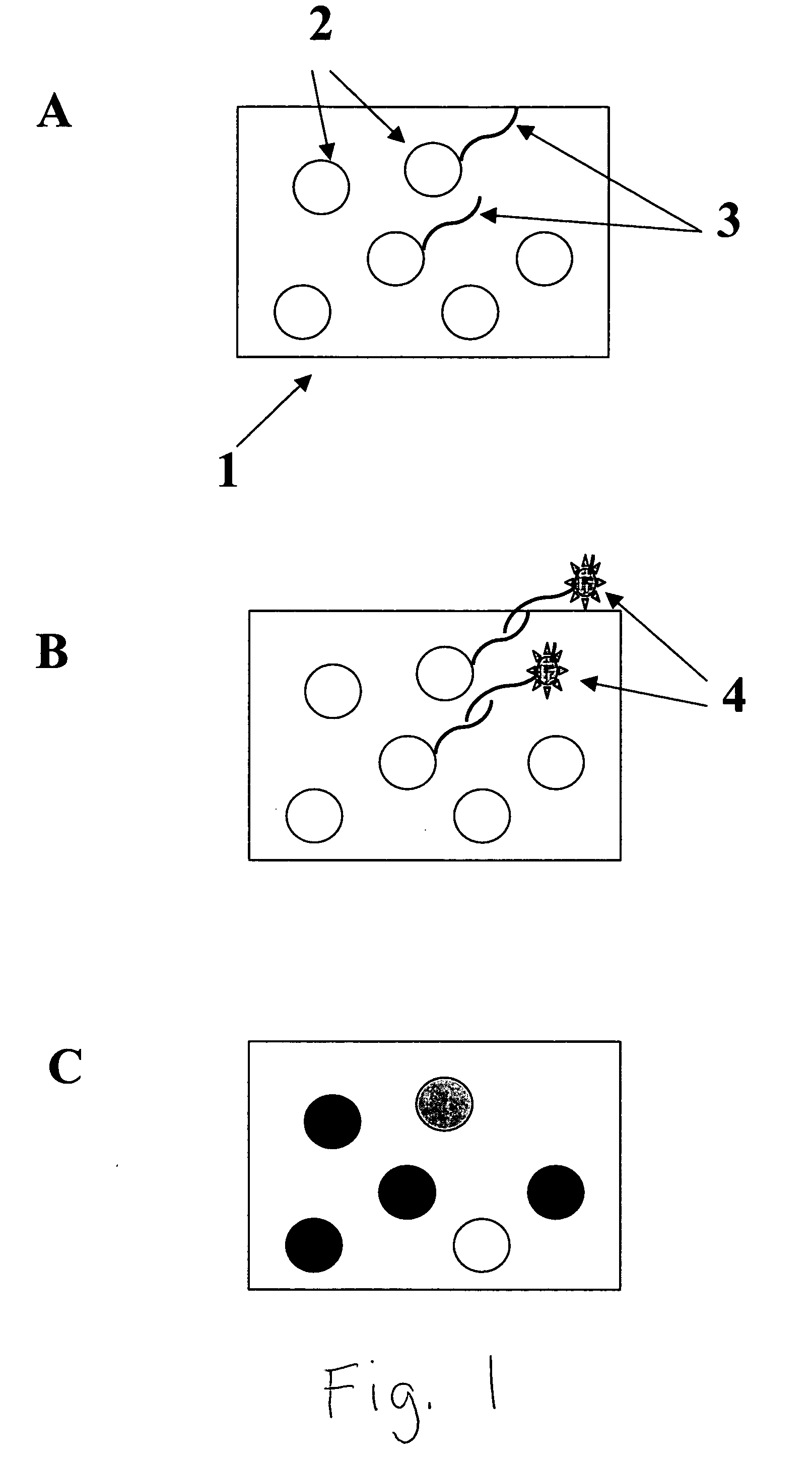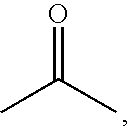Colorable microspheres for DNA and protein microarray
a protein microarray and colorable technology, applied in the field of biological microarray technology, can solve the problems of high manufacturing cost, high method cost, and limitations, and achieve the effects of increasing the number of target analytes, expanding the “spectral bar coding” capacity of the microsphere, and reducing the cost of methods
- Summary
- Abstract
- Description
- Claims
- Application Information
AI Technical Summary
Benefits of technology
Problems solved by technology
Method used
Image
Examples
example 1
This examples illustrates two methods of loading photographic couplers as latent colorants into polystyrene microspheres.
Loading method 1: For a typical preparation, a microsphere sample was prepared using a single coupler, or a fixed ratio of more than one couplers, and different ratios of coupler, coupler solvent, and auxiliary coupler solvent. The cyan coupler CYAN 1 was loaded using the sonication method as follows: 0.08 g CYAN 1 was dissolved in 0.8 g cyclohexanone and 0.08 g tricresolphosphate with stirring. This oil phase was then added to an aqueous phase of 0.48 g FAC-0064 (surfactant) and 6.52 g water with stirring at room temperature. The sample was sonicated for 1 min, producing a milky white dispersion, and then let stir. An equivalent amount, 8.0 g, of 4% 1 0-micron polystyrene microspheres was added to the sonicated sample. After mixing, the samples were poured into diafiltration bags and washed for six hours. After the diafiltration, the microspheres loaded with c...
example 2
These examples illustrate a method of loading photographic couplers as latent colorants into polystyrene microspheres using in situ polymerization process.
TABLE 1Monomer-coupler 1Monomer-coupler 2Monomer-coupler 3(cyan)(yellow)(magenta)
TABLE 2Reagents used in the preparation of beads containing monomer-boundcouplers and characterization data.Bead #1 (cyan)2 (yellow)3 (magenta)Monomer-0.85——coupler 1 (g)Monomer-—0.85—coupler 2 (g)Monomer-——0.85coupler 3 (g)Styrene (ml)36.636.636.6AIBN (g)0.380.380.38Ethanol (ml)87.587.587.5Methyl125.0125.0125.0cellosolve(ml)Polyacrylic3.753.753.75acid (g)Mean4.264.927.54particlediameter(μm)
Beads 1-3, containing cyan, magenta, and yellow couplers (Couplers 1-3) respectively, were all synthesized by the same procedure using the reagents and quantities listed in Table 2. Polyacrylic acid (3.75 g, Mw=450K) was dissolved in 67.5 ml absolute ethanol in a 500 ml 3-neck round bottom flask equipped with a nitrogen inlet, mechanical stirrer, and reflux con...
example 3
This example illustrates the attachment of pre-synthesized single strand oligonucleotide probe to the surface of coupler incorporated microspheres.
One hundred microliters of coupler incorporated microspheres (4% w / v) was rinsed three times in acetate buffer (0.01 M, pH5.0), and combined with one hundred microliters of 20 mM 2-(4-Dimethylcarbomoyl-pyridino)-ethane-1-sulfonate and ten percent of polyethyleneimine. The mixture was agitated at room temperature for one hour and rinsed three times with sodium boric buffer (0.05 M, pH8.3). The beads were re-suspended in sodium boric buffer.
An oligonucleotide DNA probe with 5′-amino-C6 modification was dissolved in one hundred microliters of sodium boric buffer to a final concentration of 40 nmol. A 20 microliters of cyanuric chloride in acetonitril was added to the DNA probe solution and the total volume was brought up to 250 microliter using sodium boric buffer. The solution was agitated at room temperature for one hour and then dial...
PUM
| Property | Measurement | Unit |
|---|---|---|
| mean diameter | aaaaa | aaaaa |
| mean diameter | aaaaa | aaaaa |
| affinity binding constant | aaaaa | aaaaa |
Abstract
Description
Claims
Application Information
 Login to View More
Login to View More - R&D
- Intellectual Property
- Life Sciences
- Materials
- Tech Scout
- Unparalleled Data Quality
- Higher Quality Content
- 60% Fewer Hallucinations
Browse by: Latest US Patents, China's latest patents, Technical Efficacy Thesaurus, Application Domain, Technology Topic, Popular Technical Reports.
© 2025 PatSnap. All rights reserved.Legal|Privacy policy|Modern Slavery Act Transparency Statement|Sitemap|About US| Contact US: help@patsnap.com



